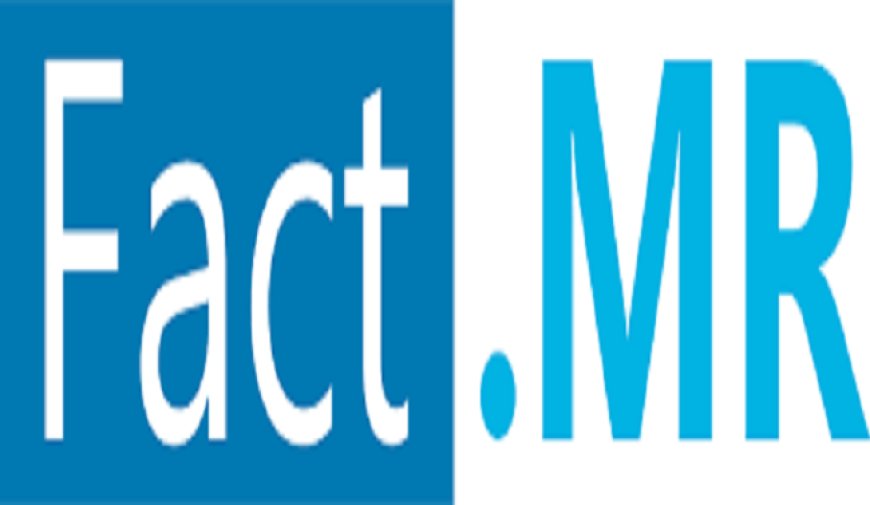U.S. Demulsifier Market Forecasted to Achieve $630.3 Million by 2034
The global demulsifier market is estimated to reach a value of US$ 2.48 billion in 2024, according to the latest report by Fact.MR. Global demand for demulsifiers is projected to grow at a CAGR of 3.4%, reaching US$ 3.47 billion by 2034.

The global demulsifier market is estimated to reach a value of US$ 2.48 billion in 2024, according to the latest report by Fact.MR. Global demand for demulsifiers is projected to grow at a CAGR of 3.4%, reaching US$ 3.47 billion by 2034.
Demulsifiers, also known as emulsion breakers, are essential chemical agents used to separate emulsified water from hydrocarbons in oil and gas production. Their primary function is to ensure the purity of crude oil and natural gas by breaking down water-in-oil emulsions. These chemicals are critical for maintaining the efficiency of production processes, reducing corrosion, and meeting stringent quality standards for hydrocarbons. The global demand for demulsifiers is rising due to their indispensable role in industries such as oil and gas, petrochemicals, and water treatment.
Market Insights
The demulsifier market is heavily influenced by the dynamics of the oil and gas sector, as it remains the largest consumer of these chemicals. Increased offshore and onshore exploration activities have significantly boosted the demand for high-performance demulsifiers. Additionally, advancements in demulsifier formulations, such as eco-friendly and biodegradable solutions, are gaining traction in response to growing environmental concerns. Regions like North America, the Middle East, and Asia-Pacific dominate the market due to their extensive hydrocarbon production and refining activities. Emerging markets, however, are also experiencing growth due to industrialization and the expansion of petroleum-based industries.
Future Outlook
The future of the demulsifier market appears robust, with continuous demand from the oil and gas sector and rising adoption in other industries like pharmaceuticals, food processing, and cosmetics. Innovations in green chemistry and the development of cost-effective, non-toxic demulsifiers are expected to drive market growth further. As environmental regulations become stricter, manufacturers are focusing on creating sustainable solutions that adhere to global standards. Additionally, the increasing use of enhanced oil recovery (EOR) techniques and unconventional hydrocarbon production, such as shale gas and tight oil, are anticipated to present new growth opportunities.
Market Demand
The demand for demulsifiers is closely tied to global energy consumption and industrial activities. The oil and gas sector accounts for the lion’s share of demand, where these chemicals are vital for ensuring smooth extraction, processing, and transportation of crude oil. Beyond oil and gas, industries like petrochemicals, wastewater treatment, and lubrication manufacturing also rely on demulsifiers to manage emulsions effectively. The growing need for clean and efficient separation processes, combined with the rising global energy demand, ensures a steady growth trajectory for the demulsifier market.
List of Key Companies Profiled in The Report
- BASF S.E.
- SI Group
- AkzoNobel N.V.
- Weatherford International Ltd.
- Nouryon
- The Dow Chemical Company
- BYK
- Others
Market Opportunities
The demulsifier market presents significant opportunities for innovation and expansion. The shift towards environmentally friendly products opens doors for manufacturers to develop bio-based and biodegradable demulsifiers that meet regulatory requirements while maintaining performance. Emerging economies, particularly in Asia-Pacific and Africa, offer vast potential due to their increasing oil production and refining capacities. Moreover, the integration of demulsifier solutions with advanced monitoring technologies, such as real-time emulsion analysis, can provide end-users with more efficient and cost-effective options. Collaborations between chemical companies and oilfield service providers also represent a key avenue for growth.
Recent Industry News
Recent developments in the demulsifier market underscore the industry's drive toward innovation and sustainability. Leading manufacturers have been investing in research and development to create high-performance, environmentally friendly formulations. The market has also witnessed several strategic partnerships between chemical producers and oilfield service companies aimed at enhancing product delivery and application efficiency. Additionally, the adoption of digital technologies for process optimization, such as AI-driven chemical dosing systems, is gaining momentum. These advancements reflect the industry's commitment to addressing environmental challenges and improving operational efficiency.
Notable Developments
Notable developments in the demulsifier market include the launch of new product lines tailored to meet the specific needs of unconventional oil and gas extraction, such as shale gas and deepwater reserves. Several companies are introducing hybrid demulsifiers that combine the properties of oil-soluble and water-soluble formulations to maximize efficiency. Furthermore, collaborations with academic institutions and research organizations have resulted in innovative solutions, such as nanotechnology-based demulsifiers. The market has also seen significant mergers and acquisitions, as key players aim to consolidate their position and expand their geographical reach.
Competitive Landscape
Leading companies in the demulsifier market are employing strategies such as product innovation, partnerships, mergers, and collaborations to enhance their portfolios and gain a competitive advantage. A strong focus on delivering high-quality products and optimizing supply chain management has been instrumental in expanding their regional presence.
For example:
In 2022, The Dow Chemical Company announced plans to develop advanced demulsifiers designed to enhance the demulsification process by reducing water particles or droplets more effectively. The company maintains a prominent share in the North American market.












